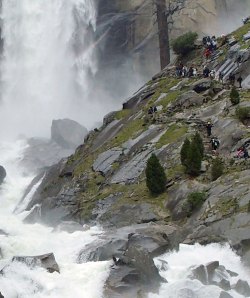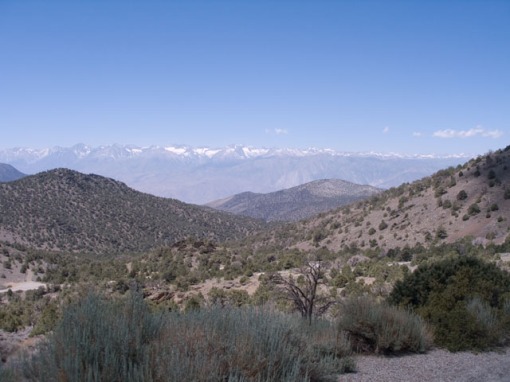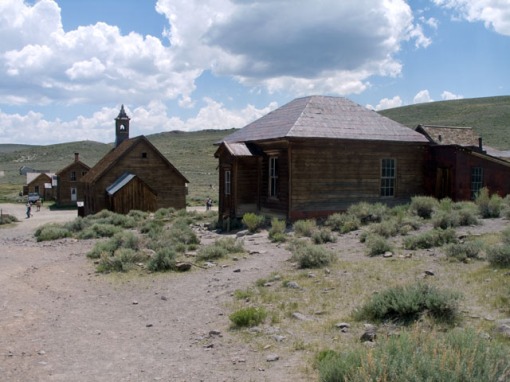Several people have had fatal accidents in Yosemite this year, which has brought up the question of why people die in Yosemite. In his classic, Staying Alive, Ranger John Dill mentions three states of mind that cause people to die or be injured: ignorance, casualness, and distraction.
Ignorance may be the most important of these, at least for casual visitors. I don’t mean to say that casual visitors are unintelligent, but many of them are ignorant. Put me in a rural town in China and I’m ignorant. Put anyone in a place they’re not very familiar with and they’re ignorant. (By calling some casual visitors ignorant, I’m not insulting them–just saying that they’re not fully aware.)
Three people slipped into the Merced River and went over Vernal Fall recently, yet they were no more ignorant and only slightly less lucky than dozens, if not hundreds, of other Yosemite visitors that day. Many, many visitors get too close to the water in dangerous places every summer day without realizing the peril they’re putting themselves into.
An article in which a coauthor of the great book Off the Wall: Death in Yosemite tries to explain how these accidents occur says, “But this is all conjecture. No one has survived one of these and has been able to say” prompted me to ask John Dill why these accidents happen. After all, plenty of people have gone into the river and almost over the waterfall, and he has 40 years of Yosemite search and rescue experience, which includes countless victim interviews. Not surprisingly, he gave me a great insight.

Here’s a section of the Mist Trail. It doesn’t look very scary (to most people) and most people wouldn’t be too scared to walk along the left (river) edge of the trail. Yet, a slip from the trail would result in almost certain death–if not from the slide, then from the river below (as happened this year and in 2009). Indeed, the slope you see here is just as dangerous as a 3,000-foot cliff. But people don’t perceive it that way. Most people have an innate fear of cliffs and are (usually) extra careful when less than several feet from the edge. However, along this section of trail, most people don’t exercise the same amount of care because it just doesn’t look as dangerous as a cliff.
Rivers and creeks in Yosemite attract people, if not just for the joy of being close to water, for some practical reason like washing their face or getting drinking water. But, in many places, these rivers and creeks are also just as dangerous as a 3,000-foot cliff, and most people don’t perceive them that way. This may explain why the three people went over Vernal Fall–they didn’t understand (they were ignorant of) the danger of the river and, as a result, made a poor (ignorant) decision. Like most people, they didn’t have an innate fear of the river; they didn’t equate the river with a cliff.
Most people also don’t understand how that “cliff” known as the river is surrounded by a slippery slope (literally)–the smooth granite adjacent to rivers is slick, and extremely and surprisingly slippery when wet. So, while some people are un-ignorant enough to avoid going into the water, they’re just ignorant enough to feel safe on the figurative crumbly rocks (slippery slope) at the edge of the cliff (river). I’ve known rangers who’ve made this mistake. I’ve made this mistake. My ranger friends and I made a poor (ignorant) decision, but were just slightly more lucky than the three who went over Vernal Fall.
So, “ignorance” isn’t just a lack of knowledge, it may also be a lack of instinct, at least in some cases. Once again: a slippery slope or a river is just as dangerous as a 3,000-foot cliff.
Ignorance leads to casualness, one of the other factors. Casualness can operate on its own, though, and perhaps explains the case of the two hikers swept off one of the Wapama Falls bridges as water flowed over it [see also this near miss] and perhaps also the case of the hiker who fell off the Half Dome cables during a thunderstorm (where wet, slippery rock and/or lightning may have been a factor). In these cases, I believe these hikers knew the risk (i.e., they were not ignorant) and made a judgment call, which turned out not to be a good one. Travel in the wilderness involves a lot of judgment calls and any experienced wilderness traveler has made plenty of bad ones, but a little extra skill or luck has prevented tragedy. Crossing a high creek is akin to dashing across a road with oncoming traffic because you think you’ll make it across just quickly enough to avoid getting hit. With decent judgment, you usually will. But not every time.
The third factor, distraction, can affect even the most careful person. This was probably another factor in the Half Dome incident, given the storm and the fact that lightning struck Half Dome around the time of the fall (it’s not clear, to me anyway, whether lightning was a factor or not, but undoubtedly, the storm was distracting and probably also caused the hiker to be rushed).
Finally, I should point out that many people have scolded all of these victims for crossing a bridge with swiftwater flowing over it, for going over a railing and into the water immediately above a waterfall, or being on the Half Dome cables during a thunderstorm. We’ve all made similarly bad decisions, but were a little luckier and possibly more skilled/better prepared than these six people. I’ve gone off trail and put myself into potentially dangerous situations before. Anyone who has spent time in the wilderness has done the same, and has a story (or two). In the urban environment, you’ve sped up to get through the intersection before the light turned red, rushed in a left turn with oncoming traffic, and maybe even made an unsafe pass. In these cases, we all made poor decisions. We’ve been ignorant, casual, and distracted, and the only difference between them and us, between living and dying, was a little luck and maybe a little extra skill.









